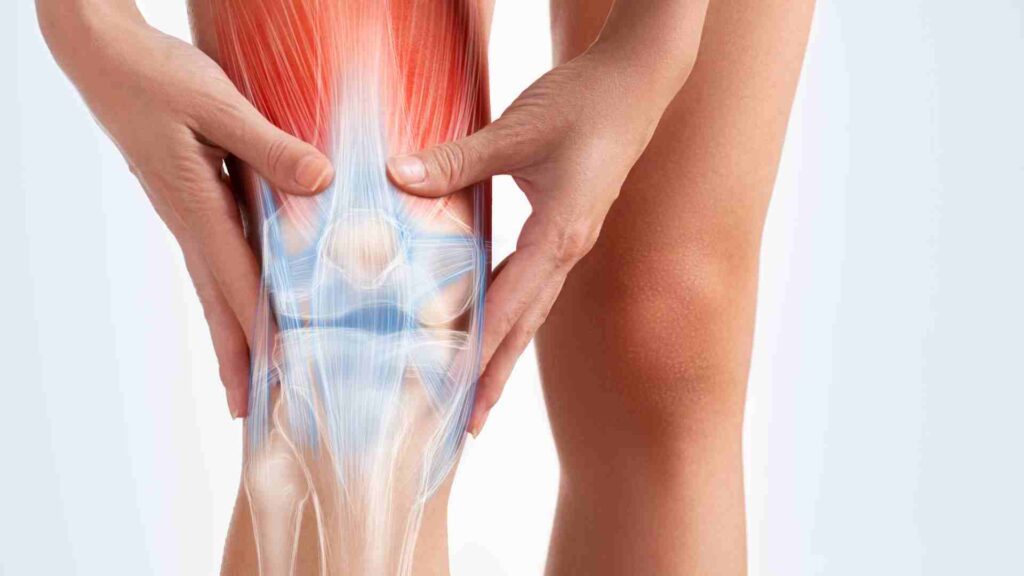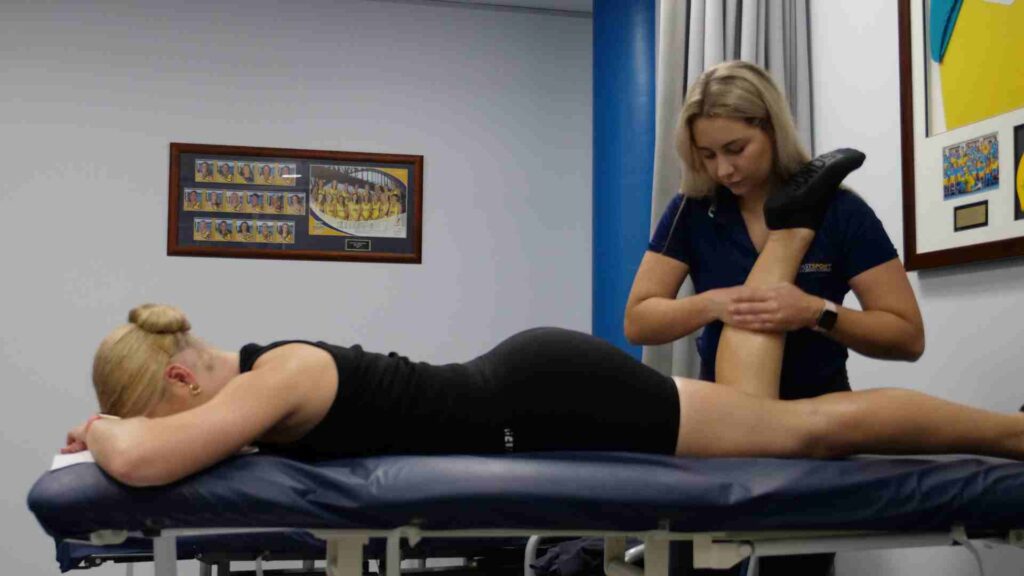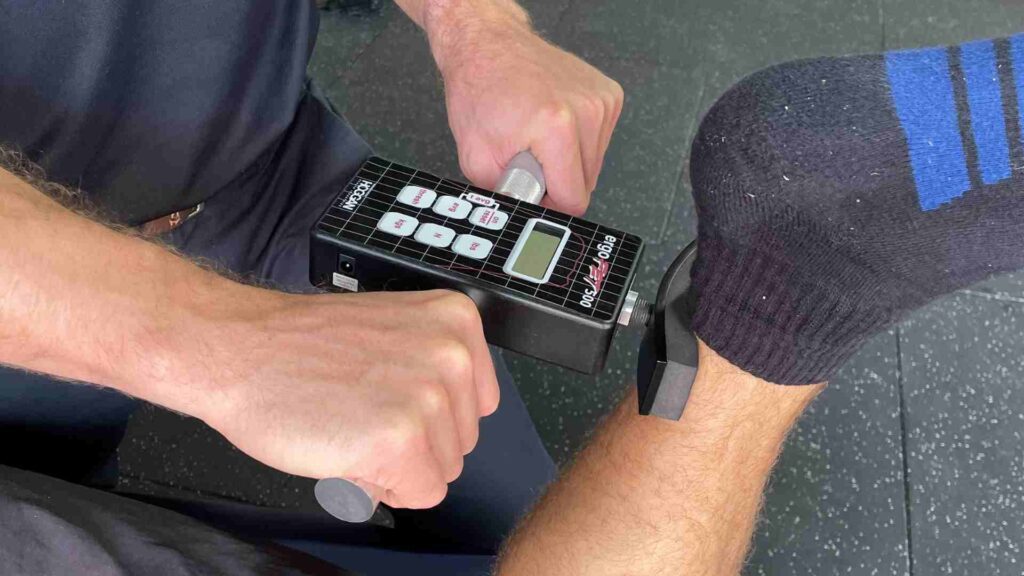Are you or your child experiencing a growth spurt and feeling pain with exercise/sport that gets worse as activity continues? This may be due to traction apophysitis, you may know a few traction-type conditions such as Severs or Osgood Schlatter. These conditions can be very painful and may require monitoring to make sure you can return to your favourite activities pain-free.
If you or your child is experiencing pain with exercise or sports that gets worse as activity continues, it’s important to seek medical attention from a qualified healthcare professional. Your physiotherapist can perform an assessment to determine if you have traction apophysitis or another condition and can provide you with a comprehensive treatment plan to manage your pain and prevent potential complications.
To help provide clarity, here’s a detailed overview of causes, symptoms, treatment options and how it often presents itself in children and adolescents.


What Exactly is Traction Apophysitis?
Children’s bones are structurally different from those of adults in that they are more flexible and contain softer areas called growth plates. Growth plates are located at the ends of the bones and are responsible for the bone’s length and width expansion during growth.
Due to their softness, growth plates are more prone to irritation from external forces, such as muscles pulling on them. These growth plates are connected to the bones via apophyses, which are small raised parts of the bone where muscles attach.
When children experience pain related to traction apophysitis, it is typically due to large amounts of muscle contractions pulling at the growth plates and irritating them. This may be due to high sports participation rates or excessive exercise such as running.
Where Can an Apophysitis Injury Occur?
Some of the most common sites for apophysitis injuries to occur are at the knee, heel, and hip. Osgood-Schlatter disease is a type of apophysitis that affects the knee and is characterised by pain, swelling, and tenderness over the bump on the upper shinbone, just below the kneecap.
Sever’s disease is another type of apophysitis that affects the heel and causes pain and tenderness at the back of the heel bone. Apophysitis can also occur at many other sites around the body, including the elbow, shoulder, and pelvis to name a few.
A common condition in growing children and adolescents, traction apophysitis can usually be managed with plenty of rest, ice, and professional physiotherapy. However, if left untreated, apophysitis can lead to more serious injuries such as stress fractures or growth plate fractures.

How Can Traction Apophysitis be Managed?
Pain should be the main guide to activity limitation in people with these types of conditions. For children that are very active, it may be necessary to discuss reducing the number of sports they are participating in. Typical initial management for these conditions is rest from aggravating activities and ice/simple pain relief. Long-term management may include a graded return to activity plan, taping for sports, addressing the way we move and stretching/strengthening our muscles. Once the growth plates of our bones have hardened these conditions are mostly self-limiting.
Common Apophysitis Complications
As mentioned before, these conditions can be very painful. Acutely, these conditions can severely limit game time/activity levels due to the level of pain. In the long term, most cases will settle. However, in very rare circumstances and if left unmanaged. small fragments of bone at the site the muscle attaches to may detach. However, this is not a typical presentation. Common apophysitis complications can also include:
- Chronic pain
- Limited range of motion
- Muscle weakness
- Growth plate fractures
- Chronic inflammation
Chronic pain
If apophysitis is left untreated or not managed properly, it can lead to chronic pain and discomfort in the affected area. This can affect the child’s ability to participate in physical activities and may impact their overall quality of life.
Limited range of motion
Traction apophysitis can cause stiffness and a limited range of motion in the affected joint. This can make it difficult for the child to move and perform everyday activities.
Muscle weakness
Apophysitis injury can also cause muscle weakness in the affected area. This can be due to the child avoiding using the affected muscle or due to atrophy caused by the injury.
Growth plate fractures
In rare cases, apophysitis injury can progress to a growth plate fracture. This can occur if the condition is left untreated or if the child continues to participate in activities that aggravate the injury.
Chronic inflammation
Apophysitis can lead to chronic inflammation in the affected area, which can cause further damage and discomfort.
How Can A Physio Help With Traction Apophysitis?

If you’re experiencing pain or other symptoms related to a musculoskeletal condition, it’s important to seek medical attention from a qualified physiotherapist. Your physiotherapist should perform an assessment with you to determine the nature of the pain or other symptoms you are experiencing, as it may in fact be a completely different condition. However, if they can confirm that you do have one of these conditions, they can provide you with guidance regarding the following:
- Training load management: One of the main strategies for managing musculoskeletal conditions is to modify your training load. This means reducing the amount of impact or stress placed on the affected area during physical activity. Your physiotherapist can provide you with guidance on how to modify your training load to help manage your pain and prevent further injury.
- A tailored exercise program: Your physiotherapist can provide you with a customised exercise program that is tailored to your individual needs and targets any deficits you may have in your exercise capacity. This program may include stretching and strengthening exercises, as well as other exercises to improve your mobility, balance, and overall physical function.
- Symptom management strategies: Your physiotherapist can provide you with strategies to help manage your symptoms, such as pain or inflammation. This may include ice or heat therapy, pain-relieving medications, or manual therapy techniques like massage or joint mobilisation.
- Movement strategies: Your physiotherapist can provide you with movement strategies to reduce the risk of further aggravation or injury to the affected area. This may include modifying your posture, using proper form during exercise, or using assistive devices to reduce stress on the affected area.
By working with a qualified physiotherapist, you can receive a comprehensive treatment plan to manage your musculoskeletal condition and prevent potential complications. Your physiotherapist can guide you through the process of recovery and help you achieve your goals for improved physical function and overall health and well-being.

When to Seek Help
If you or your child are experiencing discomfort with exercise and would like a professional opinion as to what the cause is and how it can be managed, contact our team today for an appointment with one of our qualified physiotherapists.
By seeking help from a qualified healthcare professional, such as a physiotherapist, you can receive a comprehensive assessment and treatment plan to manage symptoms and prevent potential complications from arising in the future.




 Helping the Central Coast Feel Well, Move Well and Perform Well!
Helping the Central Coast Feel Well, Move Well and Perform Well!